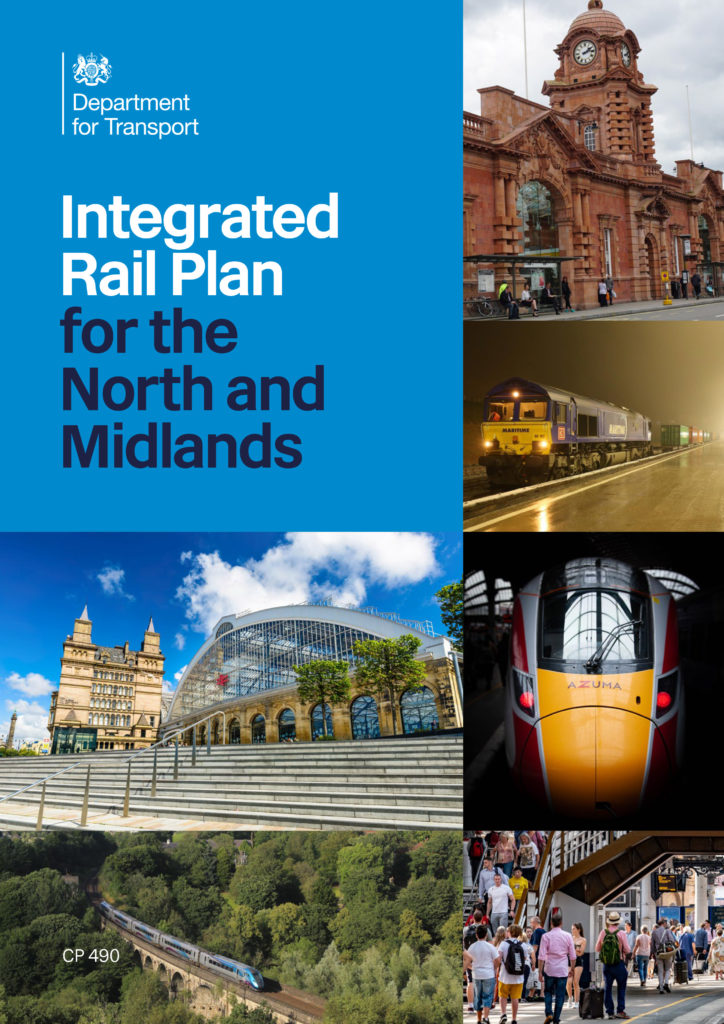In 1964, Japan pioneered its Shinkansen service which showed how a dedicated high-speed rail network provides a large increase in capacity with all trains running at the same speed. The first such European line was France’s LGV (Ligne à Grande Vitesse) between Paris and Lille, which opened in 1981. Sixteen countries now have 28,000 kilometres of high-speed lines operating at over 250 km/hr.
Historically, new railways have always driven economic development and worldwide experience shows high-speed rail offers transformational benefits. It also attracts passengers from planes and cars, and relieves capacity on existing lines to drive the modal shift needed for decarbonisation.
Britain’s first domestic high-speed railway was first proposed in 2009. HS2 was to be a 530-kilometre Y network between London, Manchester, and Leeds. Until recently it enjoyed cross party support, including commitments from the Prime Minister that HS2 was to be delivered in full. However, it was badly sold and, until recently, nothing was done to counter the view that it is a vanity project costing billons just to save a few minutes between London and Birmingham.
This falsehood took root and was one of the factors underlying the recently published Integrated Rail Plan (IRP) which the Government hailed as transforming rail links in the north. However, as we describe, in reality it cuts back Transport for the North’s proposals for Northern Powerhouse Rail (NPR) and curtails HS2’s Eastern Leg to Leeds which was to be the most transformational part of HS2. It replaces these with proposals that will require years of passenger disruption to upgrade existing lines and will still not deliver HS2’s capacity or journey time savings.

Furthermore, the Government’s transport decarbonisation plan notes that it is essential to avoid a car-led recovery and supports modal shift of freight from road to rail. Yet its IRP cuts back proposals to deliver the required rail capacity to do so on the East Coast Main Line and across the Pennines.
Years of planning by HS2, Network Rail, and regional authorities has been reversed by the patently flawed IRP report which has been subject to universal criticism by the rail industry and local authorities affected by it. France, Germany, Italy, and Spain have seen the benefits from the 9,000 kilometres of high-speed rail lines that they have built since the 1980s. Unfortunately, such long-term strategic planning does not seem to be evident in the UK.
It is ironic that a plan curtailing the railway’s ability to accept modal shift was published a week after COP26. This aimed to strengthen the Paris agreement so that global temperatures will not rise above 1.5 degrees Celsius. This requires global emissions to be reduced to 27Gt CO2e by 2030 from the present 52Gt CO2e. However, the agreements made are estimated to only limit emissions to 42Gt CO2e.
The numerous events at COP26 on the UN Climate Change website provide an international perspective on the climate emergency. We report on one such event, a hydrogen transition summit. This showed how and why a global hydrogen economy must be developed if the world is to be weaned off fossil fuels.
The rail industry rightly proclaimed its green credentials during COP26. Stations had posters proclaiming Scotland’s Railway’s plan to achieve net zero by 2035. Hydroflex and Vivarail trains were running from Glasgow Central station where the RDG’s ‘We Mean Green’ stand on the concourse explained rail’s carbon savings. Outside Glasgow, the Scottish Hydrogen train was on display at Bo’ness and the Mossend Rail Freight Terminal hosted a low carbon logistics conference. These were all informative and thought-provoking events as our COP26 reports show.
The novel green trains displayed in Glasgow attracted much media coverage, typical of which was that they are the ‘trains of tomorrow.’ Yet at Central station they were surrounded by electric trains with far greener credentials. The more important railway decarbonisation story, that Scotland is delivering a plan to decarbonise its railway by 2035, went unreported.
Yet large-scale electrification is only possible if it, and other associated infrastructure work, can be delivered in a cost-effective manner. Our feature from Siemens explains why this requires integrated infrastructure systems. With the power and acceleration it provides, electrification also supports high performing railways. Clive Kessell’s report from a wide-ranging two-day seminar on this topic is essential reading for those who wish to know how rail can deliver the performance needed to attract custom and carry high levels of traffic. Having competent engineers is clearly one requirement. In these respects, budding engineers should read Paul Darlington’s explanation of how UK-SPEC standard for becoming a professional engineer has changed.
Trams are a green solution for public transport and get people out of their cars. This was clear from the recent Light Rail Summit in Edinburgh at which Malcolm Dobell learnt how this sector is being drawn together to improve both its safety and efficiency. In another feature he describes a low-cost Very Light Rail vehicle intended to support restored railways. Another light rail system is the Glasgow Subway. We describe how this is to introduce the UK’s first unattended train operation as part of its modernisation programme.
With the festive season fast approaching, all at Rail Media would like to wish our readers a happy and safe Christmas, especially for those working on the railway over the holiday period.
Lead Photo – Vivarail battery train passes newly erected OLE masts outside Glasgow.

